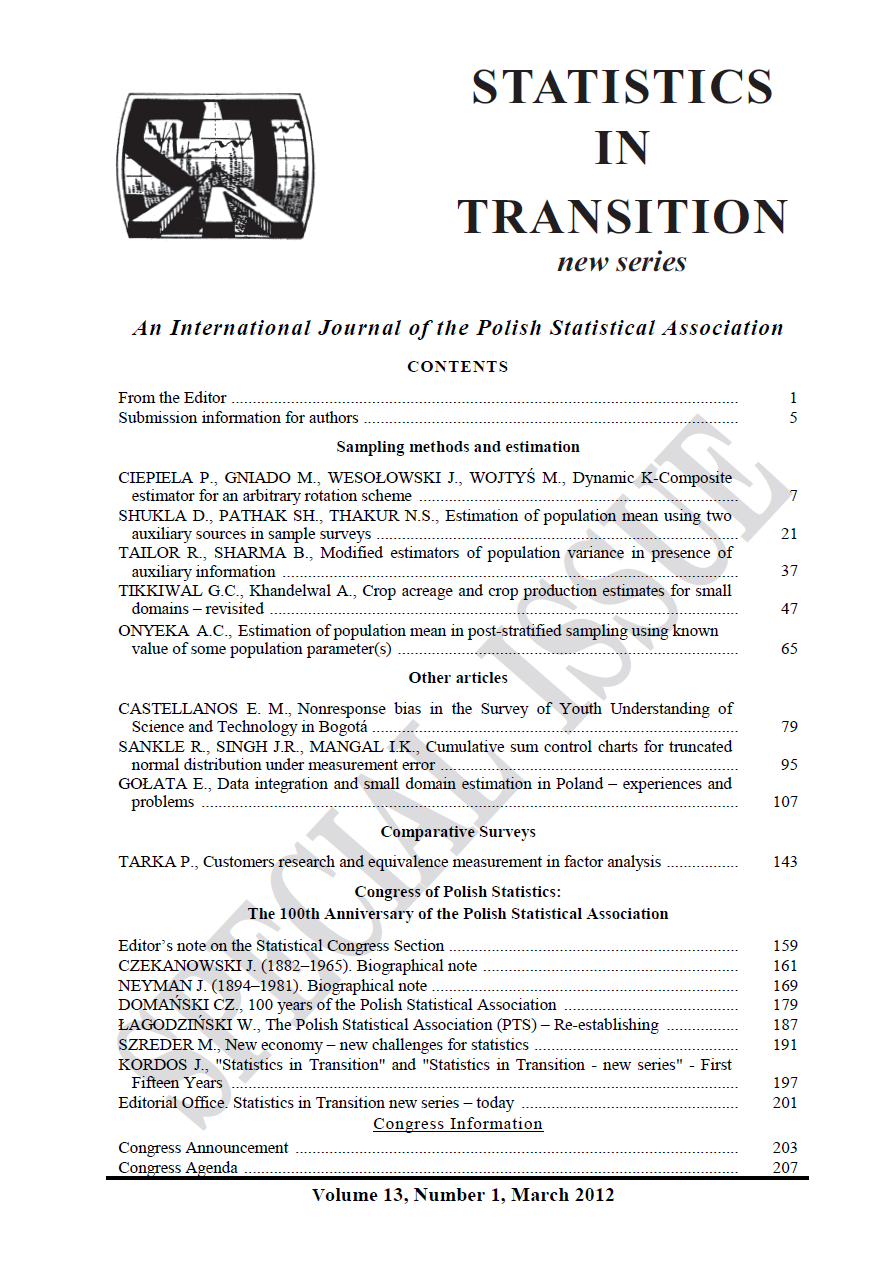ARTICLE
ABSTRACT
Factors Analysis is often tied to specific properties of population and its culture characteristics. If measurement is applied from population to another, then extracted factors may hard to be equally compared on the reflective basic level, unless all conditions of invariance measurement are met. Hence, implementation of customers research and any inter-cultural studies require a multi-cultural model describing statistical differences in both cultures with invariance as underlying assumption. In the article we implement a model for analysis of customers’ personal values pertaining to hedonic consumption aspects in two culturally opposite populations. We conducted survey in two countries and the following cities: Poland (Poznan) and The Netherlands (Rotterdam and Tilburg) with randomly prepared samples with youth representatives on both sides. This model permitted us for testing invariance measurement under cross-group constraints and thus examining structural equivalence of latent variables - values.
REFERENCES
BILLIET, J. (2002), Cross-cultural equivalence with structural equation modeling, [in:] Mohler, P.P. (Ed.) Cross-cultural survey methods, New Jersey: John Wiley & Sons Inc., pp. 247 - 264.
BOLLEN, K.A., (1989), Structural equations with latent variables, New York: Wiley.
COLE, D.A., MAXWELL, S.E. (1985), Multitrait-multimethod comparisons across populations: a confirmatory factor analytic approach. Multivariate Behav. Res. 20, pp. 389 – 417.
CRONBACH, L.J., MEEHL, P.E. (1955), Construct validity in psychological tests, Psychol. Bull. 52, pp. 281 – 302.
HU, L.-T., BENTLER, P.M., (1999), Cut-off criteria for fit indexes in covariance structure analysis: conventional criteria versus new alternatives. Structural Equation Model. 6, pp. 1–55.
JÖRESKOG, K.G. (1971), Simultaneous factor analysis in several populations, Psychometrika, 36, pp. 409 – 426.
LAWLEY, D.N., MAXWELL, A.E. (1963), Factor analysis as a statistical method. London: Butterworths.
LITTLE, T.D., SLEGERS, D.W., CARD, N.A. (2006), A non-arbitrary method of identifying and scaling latent variables in SEM and MACS models, Structural Equation Model, 13(1), pp. 59 – 72.
MEREDITH, W. (1993), Measurement invariance, factor analysis and factorial invariance, Psychometrika, Vol. 58, pp. 525 - 543.
MUTHÉN, B., (1989) Latent variable modeling in heterogeneous populations, Psychometrika, 54(4), pp. 557 – 585.
PLOYHARDT, R.E., OSWALD, F.L. (2004), Applications of mean and covariance structure analysis: integrating correlational and experimental approaches, Organ. Res. Methods, 7(1), pp. 27 – 65.
ROKEACH, M., (1973), The Nature of Human Values, New York: Wiley.
SAGAN, A. (2005), Analysis of equivalence off measurement scales in inter cultural studies, Scientific Papers, Vol. 659, pp. 59 – 73.
SCHWARTZ, S.H. (1992), Universals in the content and structure of values: theoretical advances and empirical tests in 20 countries, [in:] Zanna, M. (Ed.), Advances in experimental social psychology, vol. 25, Orlando: Academic Press, pp. 1 – 65.
SCHWARTZ, S., SAGIV, L. (1995), Identifying culture-specifics in the content and structure of values, J. Cross-Cult. Psychol. 26(1), pp. 92 – 116.
SCHWARTZ, S.H., BOEHNKE, K. (2004), Evaluating the structure of human values with confirmatory factor analysis, J. Res. Pers. 38(3), pp. 230 – 255.
SCHWARTZ, S.H. (2005), Basic human values: their content and structure across countries, [in:] Tamayo, A., Porto, J.B. (Eds.), Values and Behavior in Organizations,. Vozes, Petrópolis, pp. 21 – 55.
TARKA, P. (2010), Measurement scales for customers hedonic values –comparison of reliability techniques – Scientific papers “Econometrics” UE Wrocław, 29, pp. 23 – 38.
TARKA, P. (2010), Latent variable models - issues on measurement and finding exact constructs in customers values – Polish Statistical Review (Przegląd Statystyczny), 4, pp. 142 – 167.
TARKA, P. (2011), Statistical analysis of youth’s value systems in Poland and Netherlands – an approach to LOV and RVS scale [in:] Józef Pociecha (Ed.) „Methods of data analysis”, Academic papers UE Kraków, 2011, pp. 86 – 94.
THOMPSON, M.S., GREEN, S.B. (2006), Evaluating between-group differences in latent means. [in:] Hancock, G.R., Mueller, R.O. (Eds.) Structural Equation Modeling: A Second Course, Greenwich: Information Age, pp. 119 -169.
VANDENBERG, R.J., LANCE, C.E., (2000), A review and synthesis of the measurement invariance literature: suggestions, practices, and recommendations for organizational research, “Organ. Res. Methods” 3(1), pp. 4 – 69
